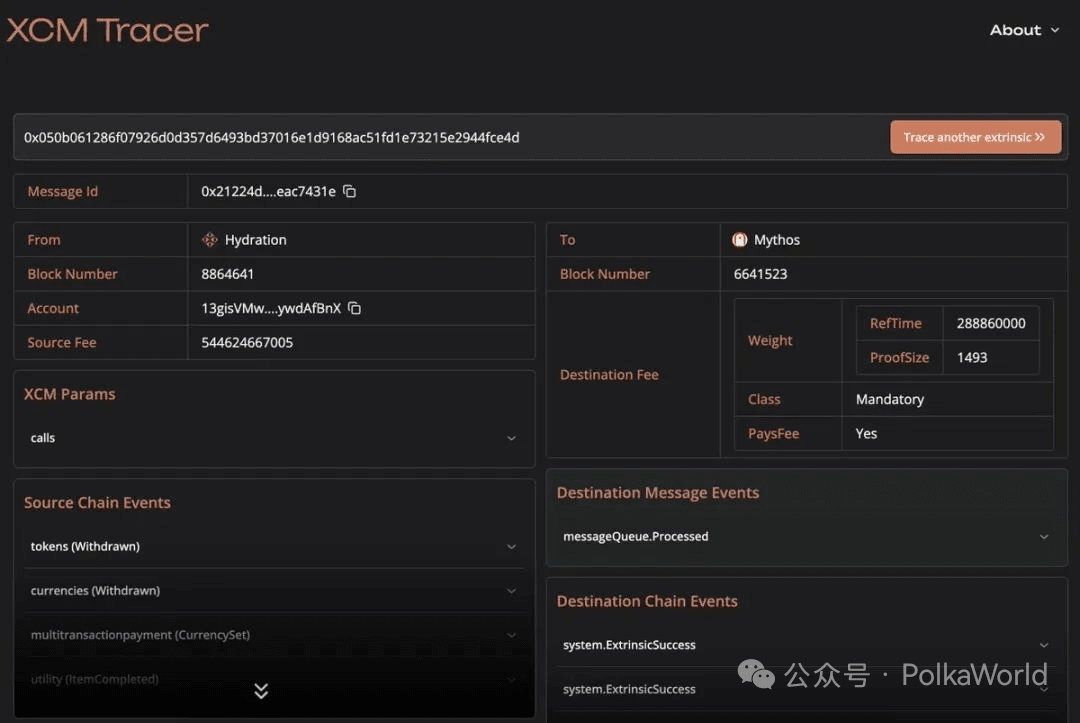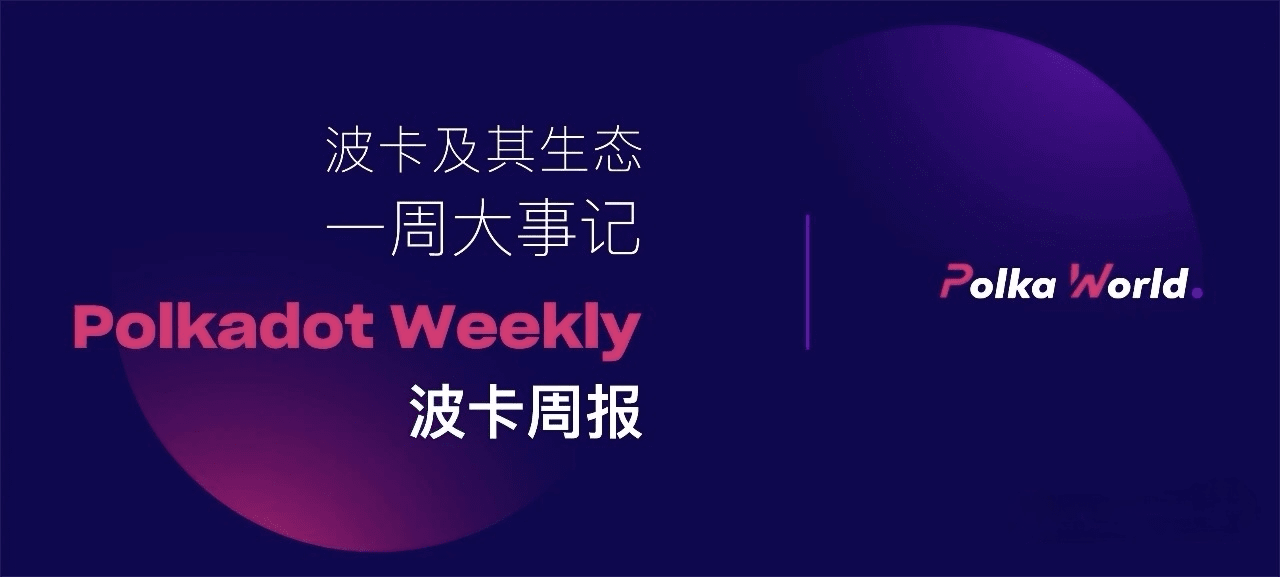
Polkadot
This week, the Growth Pressure plan was replaced by the Medium Pressure plan, which was proposed again after discussions between Alice_und_bob and Jay, and is relatively less aggressive.
We have reorganized a comparison version, but it feels like Medium Pressure and the previous Growth Pressure have no difference in market value pressure; it just takes longer to reach the hard cap.
So in the comparison between Hard Pressure and Medium Pressure, we can see:
1. The annual issuance of Hard Pressure initially sees a significant drop (blue line in the chart below), and after 2052, which is 27 years later, the annual increase will be less than 1 million DOT.
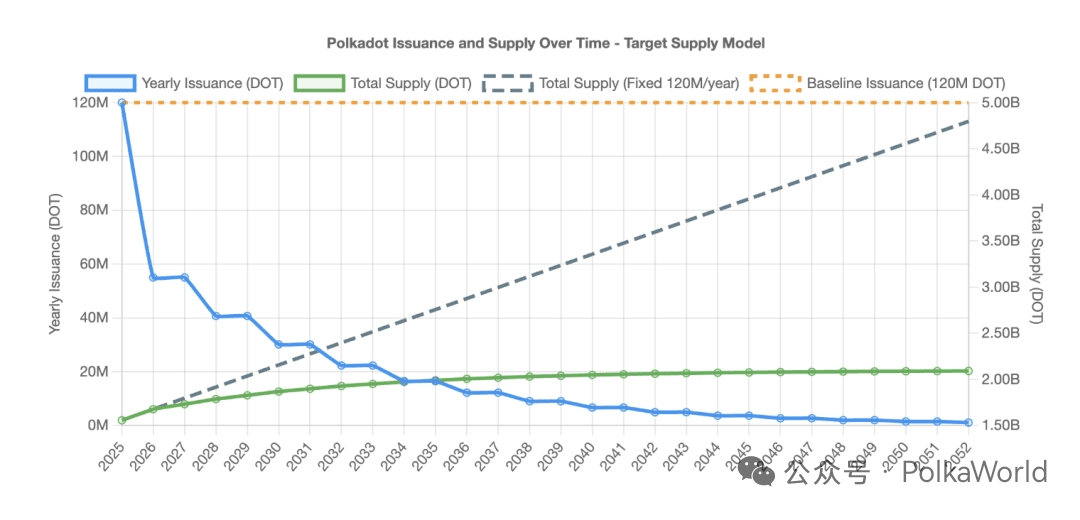
2. The annual issuance of Medium Pressure is overall much smoother (blue line in the chart below), and after 2052, which is 27 years later, the annual increase will be less than 1 million DOT.
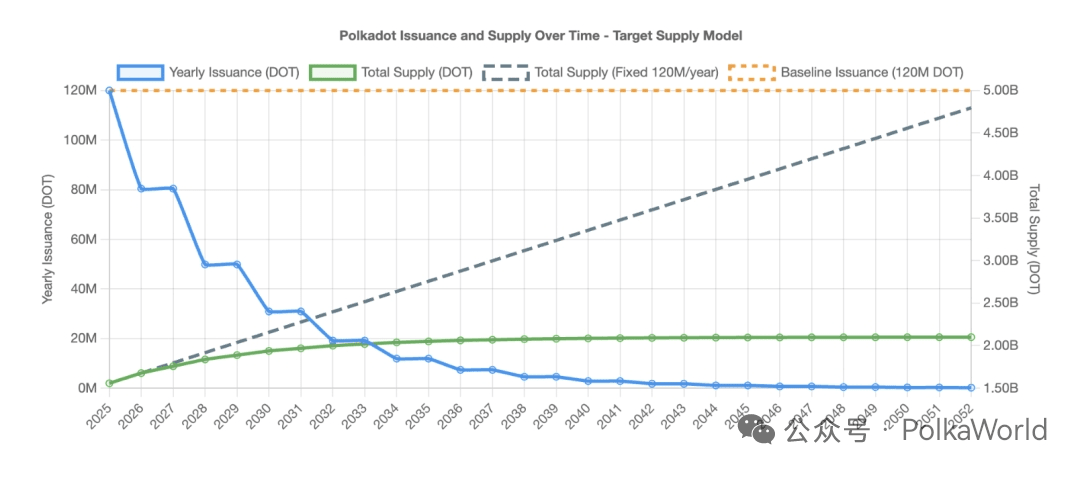
3. Under the same allocation ratio, Hard Pressure has a greater market value pressure than Medium Pressure.
4. Regardless of which plan is chosen, in the future, after this proposal, we can adjust the parameters of the allocation ratio to regulate the market value pressure and economic incentives of DOT.
In summary, regardless of which plan, we can adjust the 'pressure' faced by DOT's market value through two types of 'pressure':
The first pressure comes from the pressure of inflation reduction of different magnitudes.
The second pressure comes from the pressure of cutting the rewards ratio for stakers.
For specific data references, you can check the chart below.
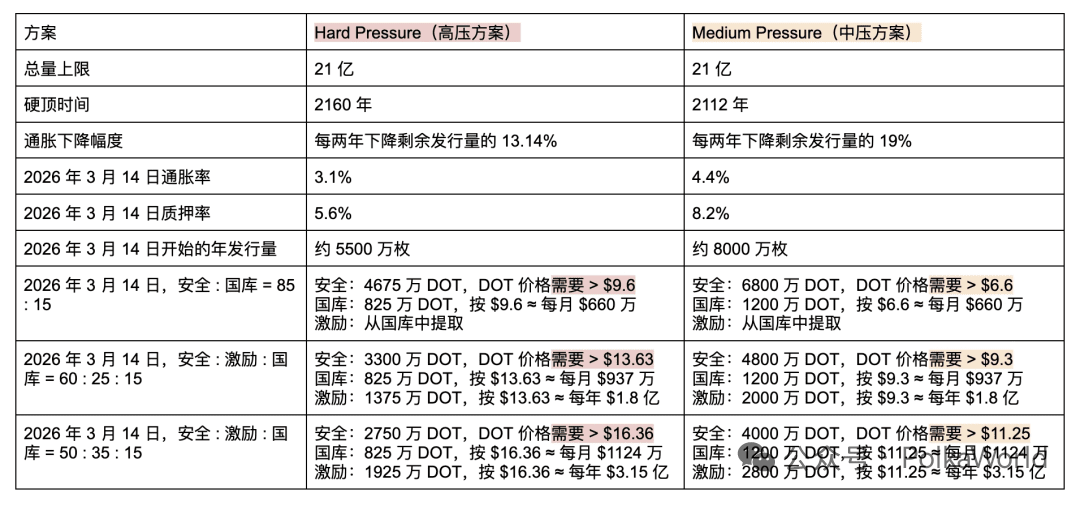
You can also check out the replay of PolkaWorld's proposal live this week for more detailed explanations: https://x.com/polkaworld_pro/status/1958363607449870719
Or check PolkaWorld's article for a comparison of all current DOT inflation proposals. (If DOT inflation drops to 3%, what market value is needed to maintain network security expenses?)
Regarding these proposals and discussions, Web3 Foundation researcher Jonas Gehrlein pointed out that a key issue is being overlooked: economic security. Jonas believes that Polkadot's security does not exist in a vacuum but is built on the staking of validators and nominators. Especially for those key validators at the 'security threshold', their security largely depends on inflation rewards. If inflation is significantly reduced, Polkadot's economic resilience will almost proportionally decline, and the network will be more vulnerable to economic attacks. In the worst-case scenario (bribing existing validators), the cost to attack Polkadot would only require 14.71 million DOT, and if inflation suddenly drops by half, this security threshold would directly fall to 8.18 million DOT, significantly lowering the difficulty of the system to withstand attacks and increasing the risk.
Policy recommendations provided by Jonas:
1️⃣ Minimum commission & minimum self-stake
Enforce validators to set a minimum commission (such as 10%) to ensure their long-term income;
Require validators to have a minimum self-staking amount (such as 10,000 DOT) to ensure 'skin in the game'.
2️⃣ Adjust the issuance structure
Currently, approximately 280,000 DOT are added daily for staking rewards, and 50,000 DOT are allocated to the treasury;
You can reduce overall inflation by adjusting the ratio of the two, rather than simply cutting it. (Jonas here also confirms the importance of adjusting ratios and parameters on inflation and market value pressure as proposed by PolkaWorld.)
3️⃣ Relax the nominator mechanism
Remove the reduction in nominators and untie periods, reduce participation risk, and increase liquidity;
Even if yields decrease, users will still be willing to participate in staking to maintain network security.
4️⃣ Inflation decreasing curve + total cap
Design a continuously decreasing issuance model, allowing the total amount of DOT to gradually approach a certain upper limit (such as π × 10⁹ DOT);
Along with coretime destruction and transaction fee destruction, make the economic model more sustainable.
Jonas' core point is very clear; simply reducing inflation = declining safety; while reducing inflation + policy matching = possibly achieving 'low inflation + safer'.
View all his suggestions here: https://forum.polkadot.network/t/polkadots-economic-resilience-and-the-role-of-inflation/14515
Check the latest progress of the JAM protocol:
Expected to start protocol audits by the end of the year: the 0.7 series is nearing completion, and 0.8 will introduce gas modeling, with hopes to advance to 0.9 and begin auditing by the end of the year.
The development toolchain is continuously improving: Parity and Gavin are building SDK & documentation, CoreVM features are being enhanced (audio and video output, data I/O, service communication based on transactions), and future support for EVM is planned. More teams will also participate in building their own JAM SDK.
Cross-service messaging (JAM version of XCM/XCMP) is under development and may directly use Hyperbridge for cross-chain.
Core collaborative scheduling (coreplay) is expected to be implemented within 12–24 months.
Governance and standardization: the gray paper will be transformed into technical specifications, and an editorial committee will be established to ensure openness and transparency.
JAM is not only the core protocol of Polkadot but may also become the unified infrastructure of Web3. For more details, see PolkaWorld's latest article: (Gavin Wood's speech: JAM delivery status, and the mid-to-long-term strategy of introducing ZK into JAM!)
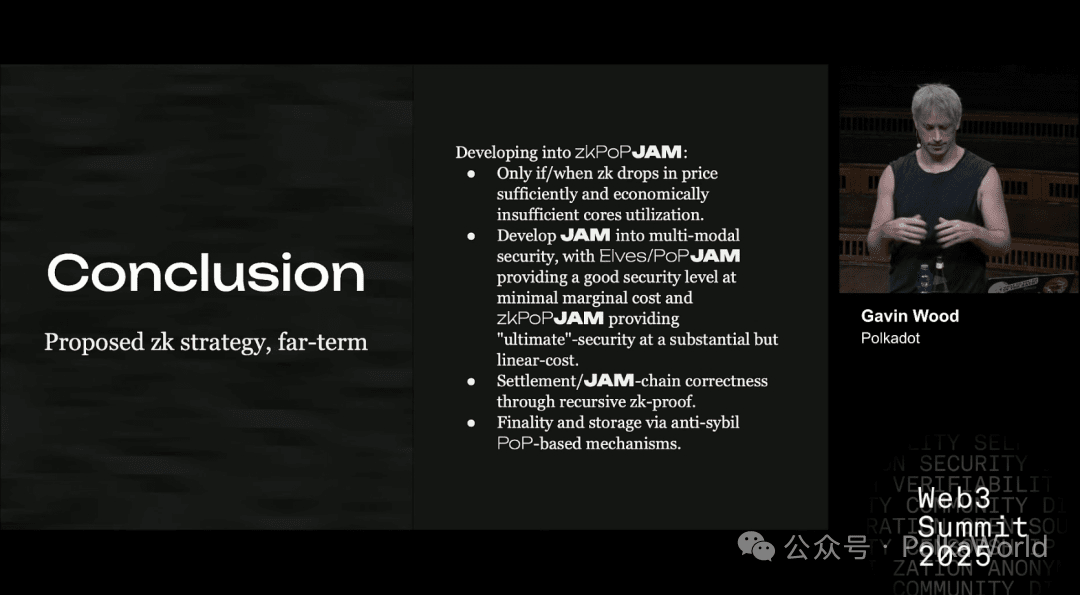
PolkaWorld news, Parity is building Polkadot Hub to become the main venue for DeFi!
Short term: Launch 100% EVM compatible (REVM), allowing Ethereum applications to migrate with zero changes.
Long term: Research and develop PolkaVM based on RISC-V to support more complex and higher performance applications
REVM allows developers, exchanges, and infrastructure providers to access the Ethereum ecosystem almost at zero cost. PolkaVM is the key to breaking through EVM limitations in the long term, bringing higher performance, multi-language support, and native extensibility.
This is Parity's dual-line strategy: short-term adoption of Ethereum, long-term reshaping of DeFi.
For an in-depth interpretation, see PolkaWorld's latest article: (Polkadot Hub will prioritize launching a 100% EVM-compatible execution environment! Creating an ideal home for DeFi applications!)
Breaking news! Polkadot officially launches Polkadot Capital Group, dedicated to building a bridge between Wall Street and Web3 against the backdrop of gradually clarifying regulations in the United States.
The organization led by David Sedacca will closely connect asset management companies, banks, OTC trading desks, exchanges, and venture capital institutions with the Polkadot ecosystem. Key directions include: CEX + DEX infrastructure, tokenization of real-world assets (RWA), staking and DeFi!
Sedacca stated: Polkadot Capital is establishing strategic partnerships with brokers, asset managers, and fund allocators to provide 'clear, credible, and actionable resources'. The goal is to help institutions truly understand and utilize Polkadot's unique value. https://x.com/polkaworld_pro/status/1958119303427019244
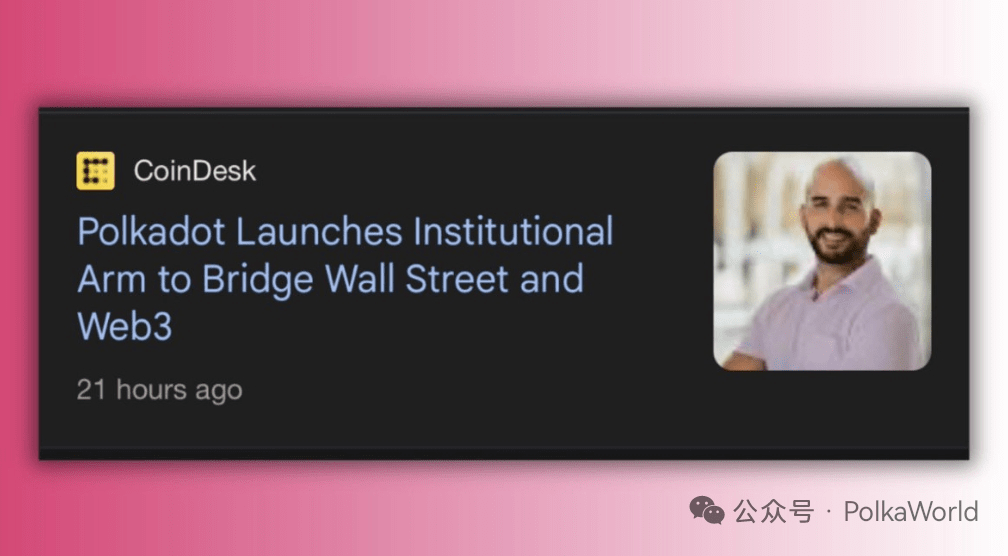
Latest progress! The rapid untie of DOT (from 28 days to 2 days) has been developed! All review comments have also been processed! The PR has been submitted to the code owners (Polkadot Technical Fellowship), waiting to be merged according to the SDK roadmap and version cycle, expected to be arranged after the Asset Hub migration (November 4). Learn more in PolkaWorld's article (Latest! The rapid unlocking function of DOT has been developed! Expected to launch after the Asset Hub migration!)
After the successful passage of Kusama referendum #569 and steady operation for a week, RFC103 has been officially deployed on Kusama! This is a historic milestone worth celebrating for the entire Polkadot ecosystem. This upgrade means that elastic scaling is finally fully launched on the Kusama network, and Kusama's parachains can now safely utilize multiple cores for computation, bringing higher throughput, lower latency, and greater scalability flexibility. In addition, Parity expects this feature to be launched on Polkadot in early September, with the exact date to be announced after the relevant referendum is submitted! (Latest! Elastic scaling officially launched on Kusama, Parity expects it to launch on Polkadot in early September!)

The Web3 Foundation announced the fifth batch of DV agent names this week! It includes 7 DV representatives and 5 DV-Lights. Notably, the foundation has introduced two AI Agents to participate in DV-Light this time, marking the first inclusion of AI agents in OpenGov. In addition, clearer rules have been set: one person can only join one DV entity, conflicts must be avoided, and if there are two violations, the foundation's delegation will be revoked.
Looking forward to DV5 transforming more voices into higher standards in the next 4 months, making OpenGov more resilient! https://x.com/polkaworld_pro/status/1957812154528407640
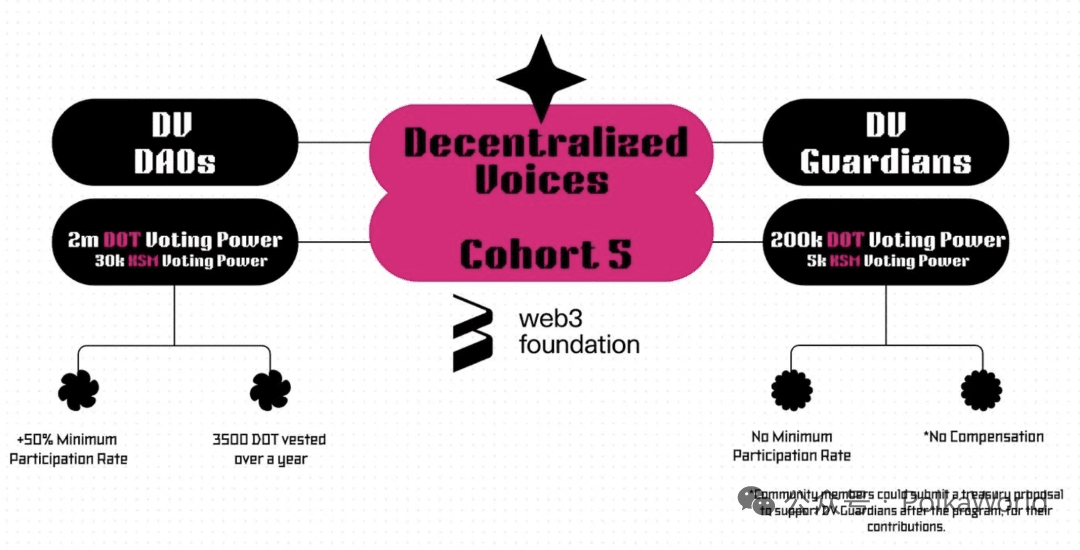
Token Terminal data message, on Polkadot AssetHub, the monthly sending users of USDC have increased by about 370% year-on-year! More and more users are sending and using USDC through Polkadot. https://x.com/tokenterminal/status/1958917113092968874
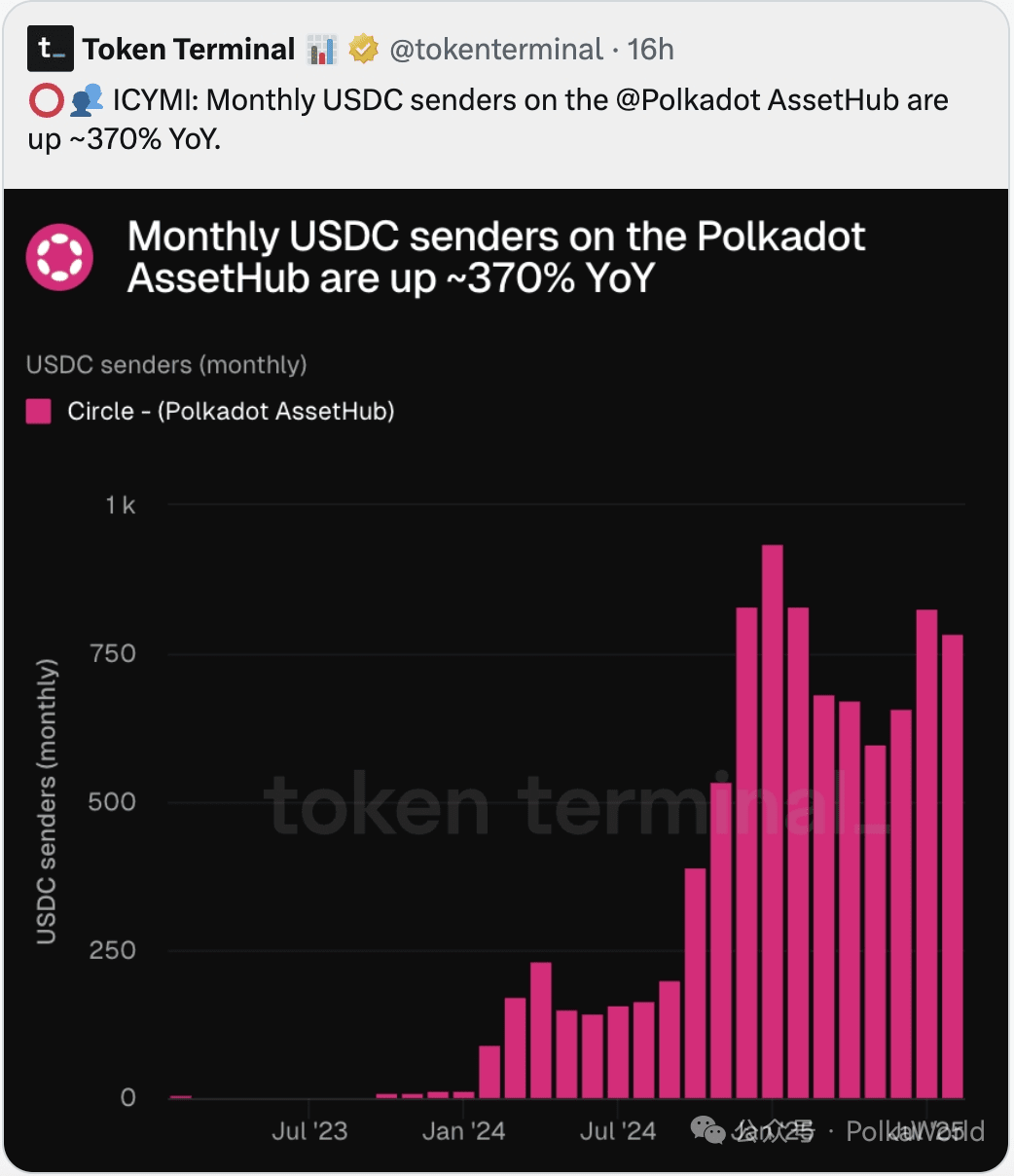
At Coinfest Asia 2025, the Polkadot booth became one of the most bustling photo spots, with an energetic and passionate atmosphere attracting numerous developers and community members to participate. The community enthusiasm for Polkadot in Southeast Asia is continuously rising, and the ecosystem is being recognized by more people in a more vibrant way. A sneak peek of the event has been released, and more exciting photos are expected! https://x.com/MandalaChain/status/1958460700814381549
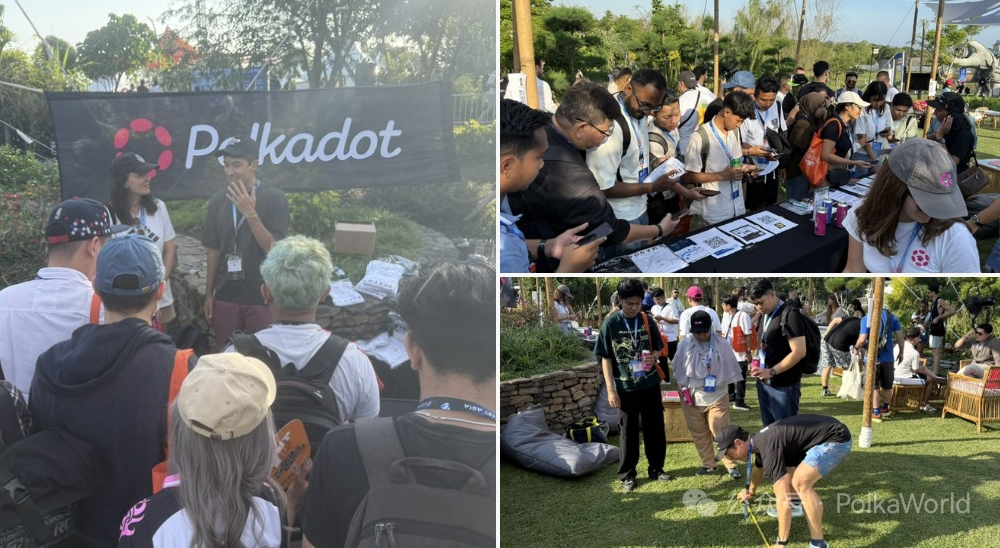
Ecosystem progress
Mythos launches an ambassador program! Recruiting content creators to promote the MYTH ecosystem together. Possible directions include: educational content, news, tutorials, gaming videos, visual works, memes, etc.
Monthly top 3 can win legendary cards + 500 MYTH
Quarterly best ambassador reward 1000 MYTH + rare cards
During the event, there are additional rewards, with the top 10 each receiving 100 MYTH
Application method: Contact the community manager @MythosCharley to obtain the form. https://x.com/EnterTheMythos/status/1955001538755141914

At the 2025 Web3 Summit, Lollipop founder Qinwen_Wang proposed a new perspective on understanding the JAM protocol! Her thoughts are very interesting; in her view, JAM is not merely a technical iteration but an opportunity to redefine the digital order! In PolkaWorld's latest video, let's discuss the practical value of the JAM protocol from the perspective of 'digital sovereignty' and global order.
Tyrone, head of Bifrost products, made a point that hits the nail on the head: price determines the level of network security.
He pointed out that if ETH staking yields reach 10%+, almost no DeFi protocols will survive, as all liquidity will flow to ETH staking. This is the core dilemma faced by Polkadot DeFi. He believes that network security relies on token prices, prices depend on liquidity, and liquidity will only flow to places with applications.
The example of Ethereum is very intuitive: Ethena launched an event on Aave, attracting $1.5 billion in liquidity in just half a day. Speed is everything. So the question arises: can the team on Polkadot achieve the same deployment speed? Can the precompiled contracts of Polkadot Hub bring this agility? This is the positive cycle of Polkadot that we need to think about. What do you think?
vDOT yield strategy update! This week Bifrost has organized several different vDOT yield methods for everyone to choose the most suitable plan based on their risk preferences:
1️⃣ GDOT of Hydration
Any token can be exchanged for GDOT with one click, directly participating in yield strategies.
You can also lend vDOT on Money Market and borrow other assets.
https://app.hydration.net/strategies/gigadot
2️⃣ Bifrost LoopStake
Self-developed staking reward amplification mechanism
Up to 4x leverage
No liquidation risk
https://app.bifrost.io/vstaking/vDOT?tab=loopstake
3️⃣ DOT-vDOT LP on StellaSwap
Customize LP based on liquidity ranges
The smaller the range, the higher the yield
Locking $STELLA can increase yields and participate in voting
https://app.stellaswap.com/pools/add/0xffffffff15e1b7e3df971dd813bc394deb899abf/0xffffffff1fcacbd218edc0eba20fc2308c778080
4️⃣ Bifrost Farming
Create a DOT-vDOT LP and deposit into the Farming pool
Yield includes $BNC rewards + transaction fees (distributed in $BLP0 form)
https://app.bifrost.io/farming?network=polkadot
More tutorials can be found here: https://page.bifrost.io/support-lab
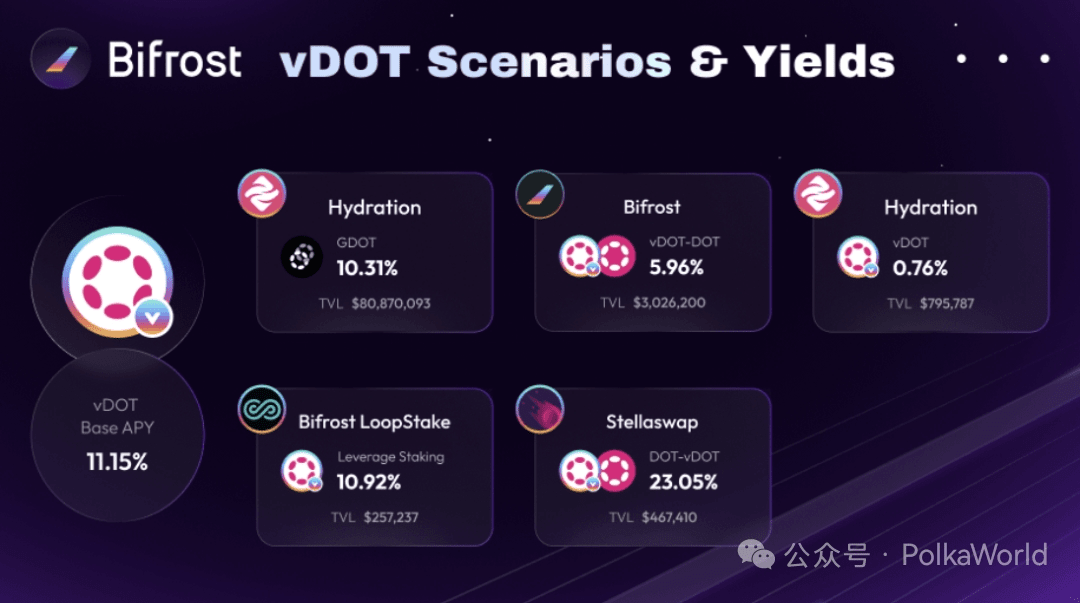
The Polkadot ecosystem stablecoin is about to go live!
The decentralized stablecoin HOLLAR (Hydrated Dollar) of Hydration launched its testnet this week. The Polkadot ecosystem stablecoin is about to go live! The emergence of stablecoins not only completes the infrastructure for DeFi, but also signifies that Polkadot will enter a new stage in liquidity, cross-chain payments, and asset pricing. https://x.com/polkaworld_pro/status/1958471617652121917
Is cross-chain messaging always confusing? Wrote XCM but don’t know where the message finally went? Try XCM Tracer developed by BlockDeep Labs!
Input transaction hash and source chain with one click to track the message's status and results across multiple chains. The visual interface is simple and intuitive, no longer getting lost in the block explorer. Supports any chain based on Substrate.
Handle the most complex cross-chain tracking in the easiest way. https://tracer.xcm.app
